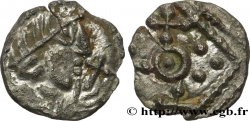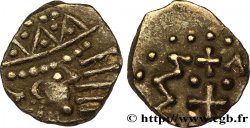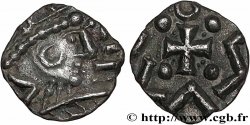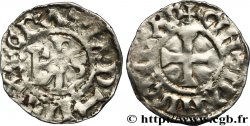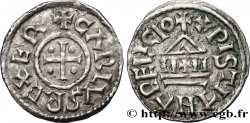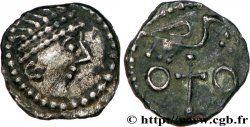E-auction 166-102505 - bmv_220113 - ENGLAND - ANGLO-SAXONS Sceat à l’oiseau, Série J, type 72, variété de revers
You must signin and be an approved bidder to bid, LOGIN TO BID. Accounts are subject to approval and the approval process takes place within 48 hours. Do not wait until the day a sale closes to register. Clicking on « bid » constitutes acceptance of the terms of use of cgb.fr private e-auctions.
Bids must be placed in whole Euro amounts only. The sale will start closing at the time stated on the item description; any bids received at the site after the closing time will not be executed. Transmission times may vary and bids could be rejected if you wait until the last second. For further information ckeck the E-auctions F.A.Q.
NO BUYER'S FEE.
NO BUYER'S FEE.
| Estimate : | 300 € |
| Price : | 52 € |
| Maximum bid : | 58 € |
| End of the sale : | 20 June 2016 15:23:30 |
| bidders : | 9 bidders |
Type : Sceat à l’oiseau, Série J, type 72, variété de revers
Date: c. 680-710
Mint name / Town : France (nord-ouest) ?
Metal : silver
Diameter : 12,5 mm
Orientation dies : 6 h.
Weight : 0,77 g.
Rarity : R3
Coments on the condition:
Monnaie complète, mais de frappe molle. Patine grise et granuleuse, avec de petites concrétions sombres par endroits
Catalogue references :
Obverse
Obverse legend : ANÉPIGRAPHE.
Obverse description : Deux têtes face à face, une croix posée sur une base entre les deux ; grènetis.
Reverse
Reverse legend : ANÉPIGRAPHE.
Reverse description : Oiseau à droite, la gueule d’un monstre (?) au-dessus, dont le corps est formé d’un cordon perlé ; une croisette devant l’oiseau.
Commentary
Ce type reprend la même typologie de droit que le “Sceat aux têtes affrontées et aux 4 oiseaux, Série J, type 37”, mais associée à un revers à l’oiseau non retourné.
Ce type semble très rare ; il manque aux collections publiées de Cambridge et d’Oxford. Il n’est repris que sous forme de note par D. M. Metcalf dans la partie consacrée aux monnaies avec ce type de droit (cf. Vol. III, pages 357 - X).
Cette variété bien particulière associe le droit typique des types 37 et 72 (avec les deux têtes face à face avec la croix entre les deux) et un revers à l’oiseau proche du type 72, mais sans que l’oiseau retourne la tête.
La seule mention retrouvée de cette variété est dans l’ouvrage de T. Abramson, ex. J350, provenant du Nord-Ouest de la France !.
This type uses the same obverse typology as the “Sceat with confronting heads and 4 birds, Series J, type 37”, but associated with a reverse with the bird not turned over. This type seems very rare; it is missing from the published collections of Cambridge and Oxford. It is only included in the form of a note by DM Metcalf in the section devoted to coins with this type of obverse (see Vol. III, pages 357 - X). This very particular variety combines the obverse typical of types 37 and 72 (with the two heads facing each other with the cross between the two) and a reverse with the bird close to type 72, but without the bird turning its head. The only mention found of this variety is in the work of T. Abramson, ex. J350, from the North-West of France!
Ce type semble très rare ; il manque aux collections publiées de Cambridge et d’Oxford. Il n’est repris que sous forme de note par D. M. Metcalf dans la partie consacrée aux monnaies avec ce type de droit (cf. Vol. III, pages 357 - X).
Cette variété bien particulière associe le droit typique des types 37 et 72 (avec les deux têtes face à face avec la croix entre les deux) et un revers à l’oiseau proche du type 72, mais sans que l’oiseau retourne la tête.
La seule mention retrouvée de cette variété est dans l’ouvrage de T. Abramson, ex. J350, provenant du Nord-Ouest de la France !.
This type uses the same obverse typology as the “Sceat with confronting heads and 4 birds, Series J, type 37”, but associated with a reverse with the bird not turned over. This type seems very rare; it is missing from the published collections of Cambridge and Oxford. It is only included in the form of a note by DM Metcalf in the section devoted to coins with this type of obverse (see Vol. III, pages 357 - X). This very particular variety combines the obverse typical of types 37 and 72 (with the two heads facing each other with the cross between the two) and a reverse with the bird close to type 72, but without the bird turning its head. The only mention found of this variety is in the work of T. Abramson, ex. J350, from the North-West of France!







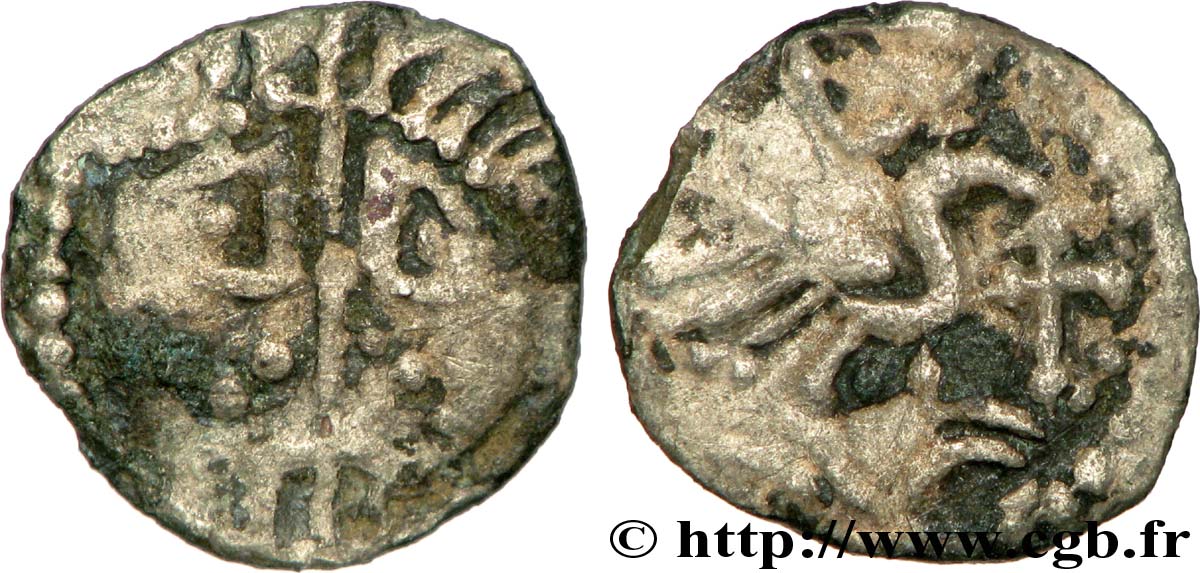
 Report a mistake
Report a mistake Print the page
Print the page Share my selection
Share my selection Ask a question
Ask a question Consign / sell
Consign / sell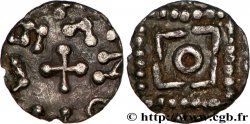
 Full data
Full data

